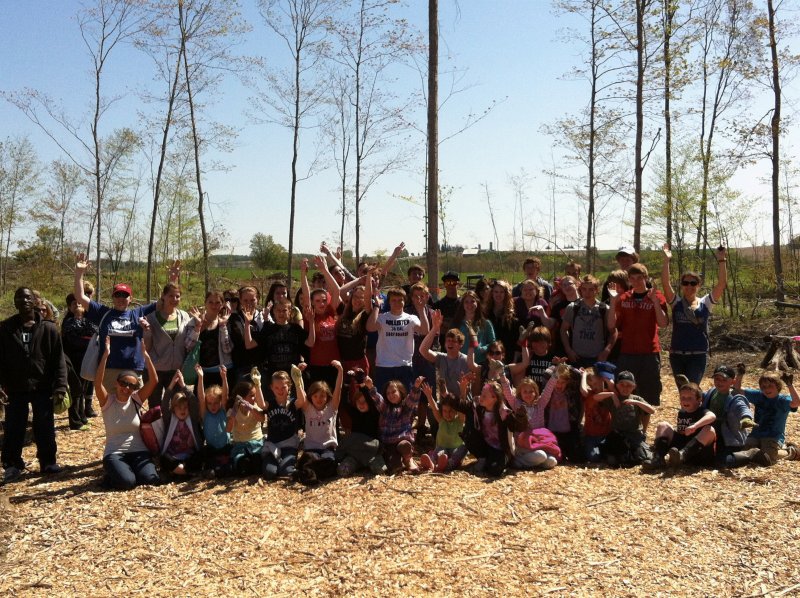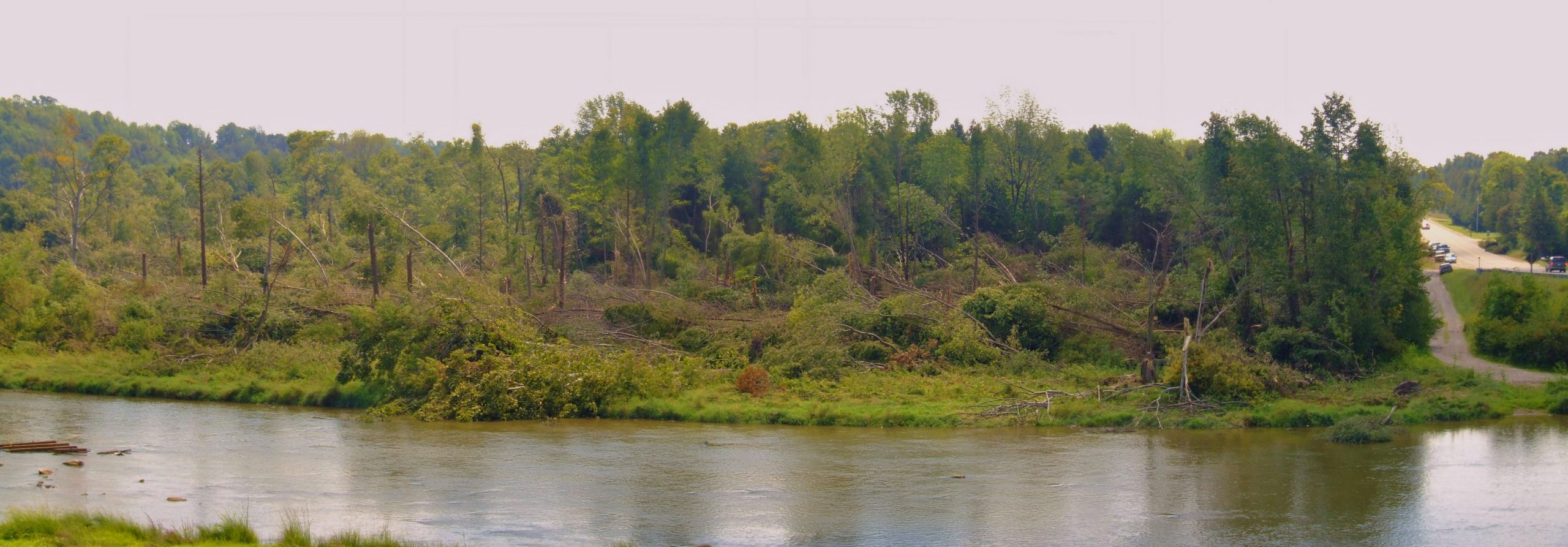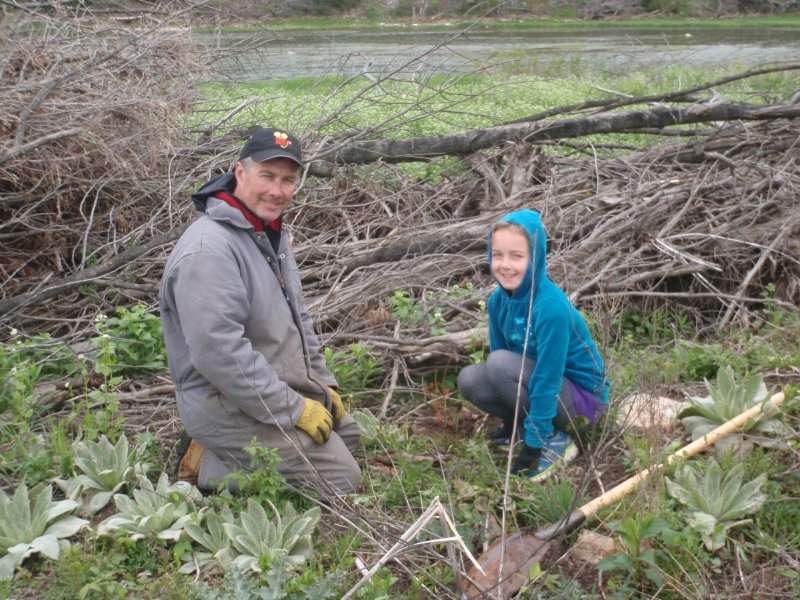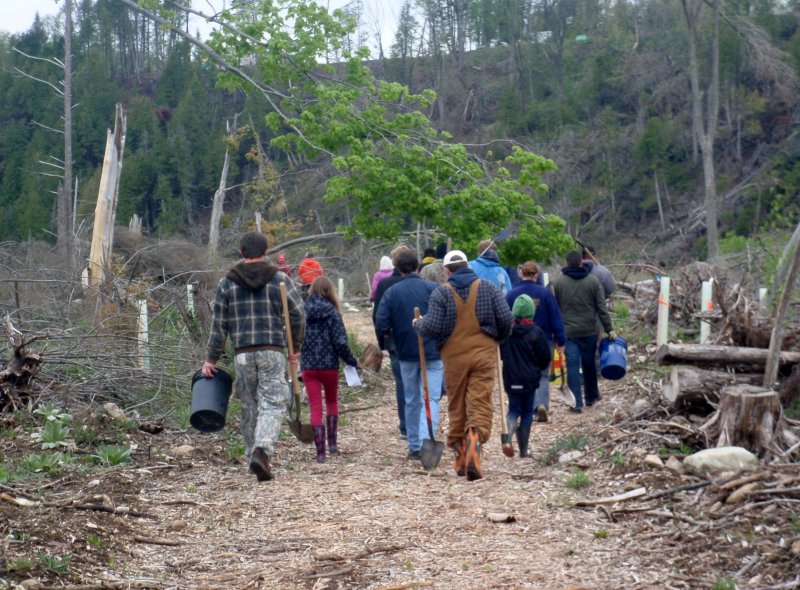Trees Beyond Goderich

Trees Beyond Goderich
Rural Disaster Relief through Reforestation
A tornado blew through Goderich and the Huron County countryside on August 21, 2011. The Trees Beyond Goderich project planted trees in the path of the tornado, and beyond. To date, over 23,000 trees have been planted in about 90 acres! This includes 37 acres in the path of the tornado, and 53 acres outside of the tornado-damaged area.
Background
In 2011, an F3 tornado devastated 220 acres of woodlot in a twenty-kilometre rural corridor stretching from Goderich to Highway #4, north of Clinton. In many instances, the tornado traced the course of the Maitland River, severely damaging the fringing woodlots. The contiguous strip of natural habitat is of extreme ecological importance, and in the tornado many of the woodlots that buffered the river and provided essential habitat for wildlife were severely damaged.
With the help of community volunteers, Trees Beyond Goderich helped to conserve and enhance at-risk woodlots. By 2014, with the help of about 280 enthusiastic volunteers, we planted over 11,500 trees in 69 acres of tornado-damaged woodlots! With funding assistance from grants and the generous support of local donors, we raised over $92,000 to facilitate these achievements. We were blown away by the enthusiasm of the community. Volunteers helped by planting trees, spreading mulch, watering newly planted trees (throughout a very dry summer), hammering tree stakes and pulling the invasive Garlic Mustard. We were fortunate to work with neighbours and friends of those affected by the tornado, local school groups, nature enthusiasts, and even a volunteer group with members from abroad (reTREEt America).

Program Objectives

Research
We monitored regeneration and restoration approaches to tornado woodlot restoration. Our objectives were to study the viability of assisted migration of tree species from the Carolinian Zone beyond the historical northern limit by monitoring survival and tree health over time; and to determine the efficacy of tree shelter products (e.g. Tubex tree shelters) for preventing seedling/sapling deer browse in woodland plantings. We were able to complete this research with the support of the Canadian Tree Fund‘s Jack Kimmel Grant.
Learn More

